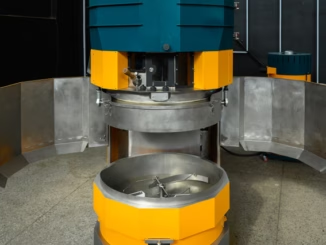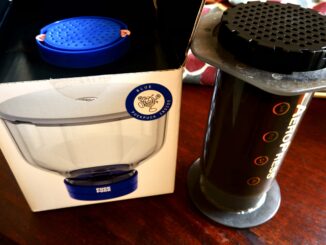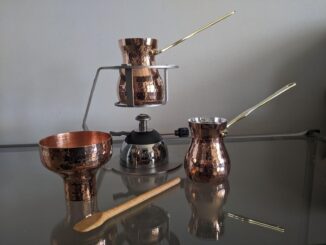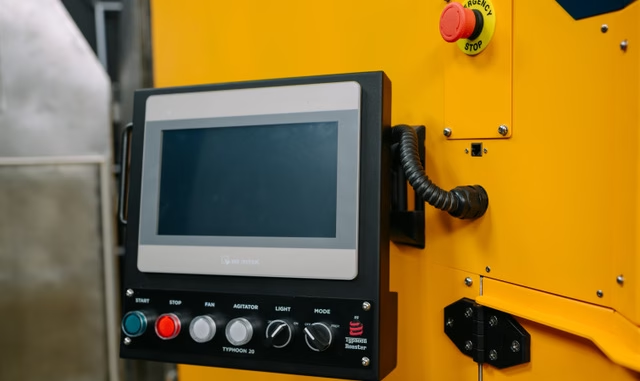
We continue our exploration of hot air roasting and hear from Ben Morrow, co-founder and roaster of Manhattan Coffee Roasters.
BY TANYA NANETTI
SENIOR ONLINE CORRESPONDENT
Photos courtesy of Typhoon Roasters
Welcome to part two of our exploration of hot air roasters, also known as fluid bed roasters. In part one, we spoke to Collin Bay of First Crack Coffee about the difference between drum roasters and hot air roasters. Today, we’ll take a closer look at hot air roasters and the benefits of working with one.
Hot Air Roasters: A Deeper Dive
To learn even more about hot air roasting, I contacted a longtime friend, Ben Morrow, who is a former New York and London Coffee Master, and co-founder and roaster at Manhattan Coffee Roasters, based in the Netherlands. Ben recently switched from a classic 100% manual Probat drum roaster to a 20-pound Typhoon electric model, and shares his thoughts on why it was a good decision.
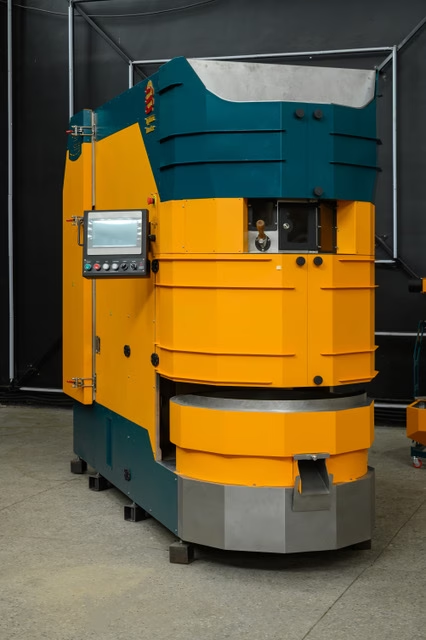
“A fluid bed roaster is a machine that uses hot air to provide the energy to green coffee rather than a combination of contact and hot air, like a drum roaster,“ Ben says. “This means that instead of having a lot of conduction in the roast, you have mostly convection. It’s kind of like an air fryer, but it usually uses a fan system to push air through the coffee container. There are different configurations.”
Ben also explains that, in terms of heating systems, hot air machines also have different systems: either gas or electric. He specifically discusses the features of the Typhoon: “The unit runs on electricity: At the back of the roaster is a series of heating coils that heat the air pushed by the main fan. The amount of energy applied to the heating coils depends on what you program into the machine; the software uses a combination of PID controllers and the Typhoon program to manage the amount of energy needed.”
Then, Ben goes on to explain what happens to the beans during the roasting stage. “Once the green coffee is loaded into the roasting chamber, the main fan and heating coils are activated. In the Typhoon we also have an agitator, essentially a stirring part, that also turns on,“ he says. “The hot air suspends the coffee so that it looks like a supply of small waves passing through the coffee bed and a fountain of beans in the center. The mass is monitored with three software-managed probes. Because the energy transfer is extremely efficient, the mass is almost at the same temperature as it rises to the point where we drop the coffee out.”
Benefits of Hot Air Roasters: Energy Efficiency + Speed
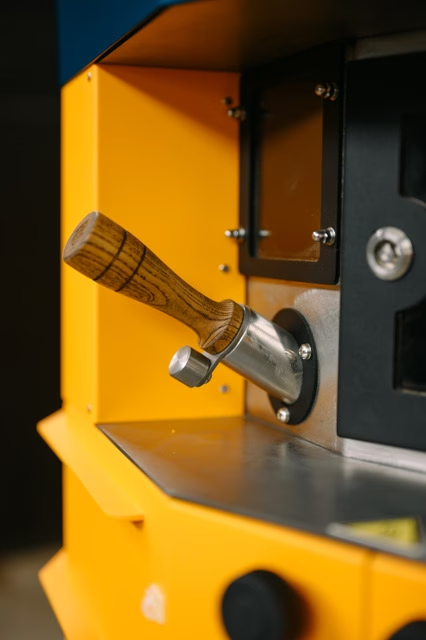
When Ben mentions energy, I can’t help but ask if hot air is an energy-efficient roasting method, especially when compared to drum roasting. “Definitely,” Ben answers without hesitation. “Air roasting can be much more efficient and certainly more uniform than drum roasting. We are absolutely certain of this because we use a color sorter for all our coffee, and the amount of roasted coffee discarded with the same parameters is far less. In addition, because of the more efficient transfer of energy in a fluid bed roaster, the roasting process is also much faster. Just think that some of our roasts are as fast as 2.5 minutes, which would be perhaps a quarter of the speed of a normal drum roast!”
Rather impressed by the idea of such a fast roasting process, I ask Ben to tell me more about the roasted beans. After mentioning that, like the drum roaster, the hot air roaster can be used for all roasting styles, Ben reminds us that hot air roasters can’t give coffee the flavor of a drum roaster, so which roasting style you prefer is more a matter of preference.
Then, he moves on to discuss any inconsistencies in roasted beans, which he says are typically only present when the machine is in need of maintenance. He also brings up that, compared to other roasting styles, fluid bed roasting produces coffees that “appear a little lighter.“
Hot Air Roasted Coffee: A Difference in Flavor
That brings us to a final curiosity: Is it possible to recognize a coffee roasted with a fluid bed roaster just by its flavor? “What’s really interesting is the impact on flavor and aftertaste of roasting with a hot air roaster,” Ben says, ”or rather, the absence of impact. Whatever you roast on a fluid bed would probably be entirely the coffee itself, rather than the roasting unit impacting the flavor with unpleasant taints as a drum roast would.”
He then concludes our discussion by sharing his experience working with his new Typhoon. “The idea we were applying to our old drum roast came from research on the fluid bed, and we were always going to switch at some point so that we could achieve exactly what we wanted,” Ben says. ”Now that we’ve done that, I can confirm that roasting with the Typhoon is an absolute dream. We already have all the programming set up, so we can just dial in the coffee and press the ’play’ button. You don’t even have to be present at the roaster to handle the changes, and it’s completely automatic. Before, the Probat was 100% manual, so the amount of work was extremely high. … I couldn’t be happier with the decision we made (to switch).”
ABOUT THE AUTHOR
Tanya Nanetti (she/her) is a specialty-coffee barista, a traveler, and a dreamer. When she’s not behind the coffee machine (or visiting some hidden corner of the world), she’s busy writing for Coffee Insurrection, a website about specialty coffee that she’s creating along with her boyfriend.
Subscribe and More!
As always, you can read Barista Magazine in paper or digital format. Read the December 2024 + January 2025 issue for free with our digital edition.
And for more than three years’ worth of issues, visit our digital edition archives here.



